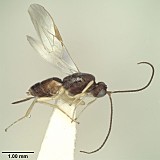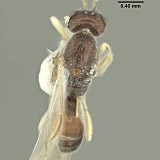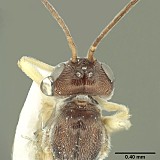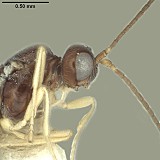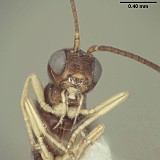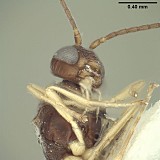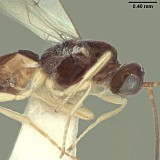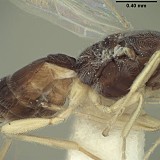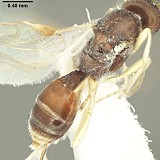Opius taramegillae Wharton, 2013
Opius taramegillae and O. cosa represent Yet another distinctive species group within Opius s. l. of species known to attack non-frugivorous Tephritidae. These two species are most easily differentiated from all the others known to have this host relationship by the complete absence of the occipital carina and the long, deep midpit of the mesoscutum. As in O. nympha and O. yoderi, the distal abscissa of fore wing CU arises posteriorad the middle of the 1st subdiscal cell, a common feature of opiines in general, but unusual among those opiines attacking stem and flower-infesting tephritids in the New World.
Holotype: Female, deposited in UNAM.
There are no specimens currently determined for this OTU, or those specimens determined for this OTU are not yet mappable.
MEXICO: Morelos, Parque
Lag. de Zempoala, clear-
ing at entrance, 9–11.
VIII.1989, A.L.Norrbom
Second label:
reared ex. stems
Barkleyanthus salici-
folius (H.B.K.) H.
Robins. & Brett. (89M1)
prob. ex. Paroxyna sp.
Third label:
ALN second line: 34A
This material is based upon work supported by the National Science Foundation under Grant Numbers DEB 0949027 and DEB 0328922 with REU supplement 1313933.
Any opinions, findings, and conclusions or recommendations expressed in this material are those of the author(s) and do not necessarily reflect the views of the National Science Foundation.

